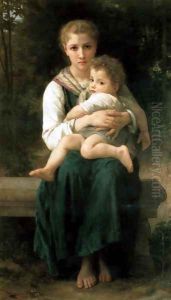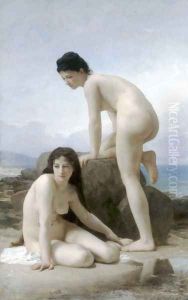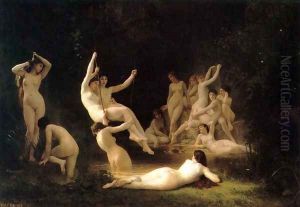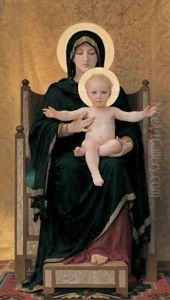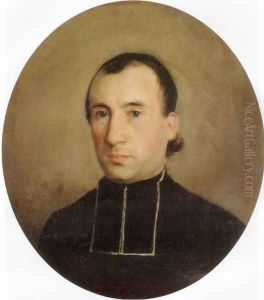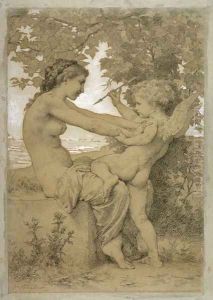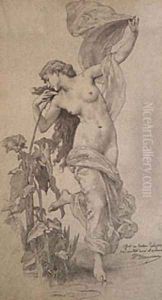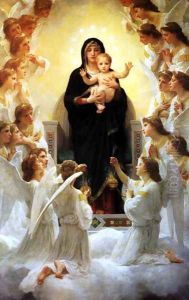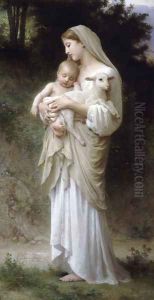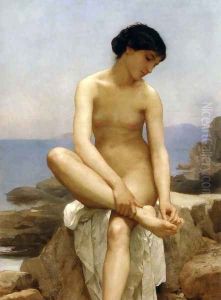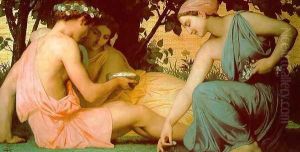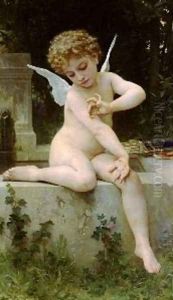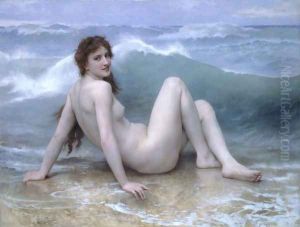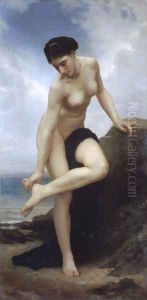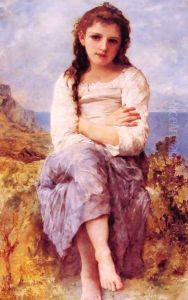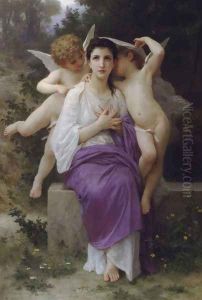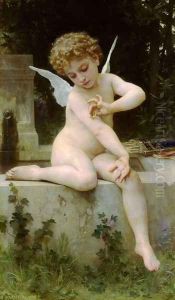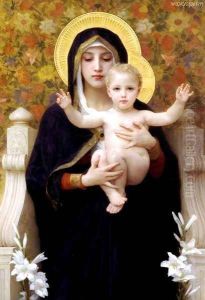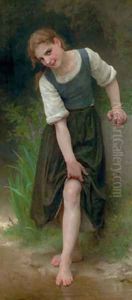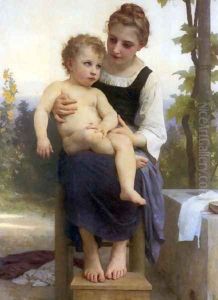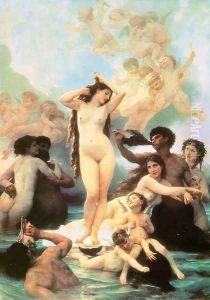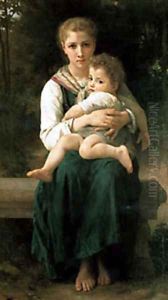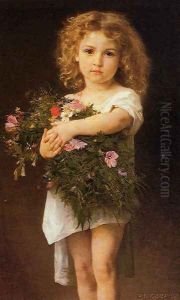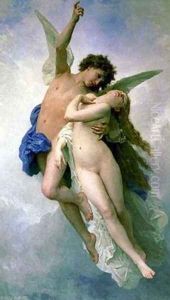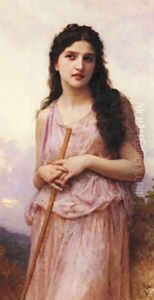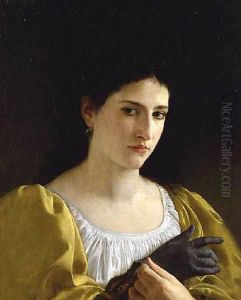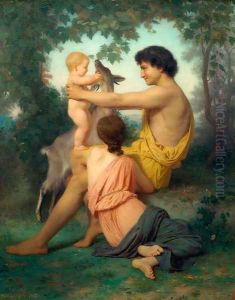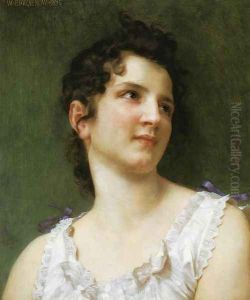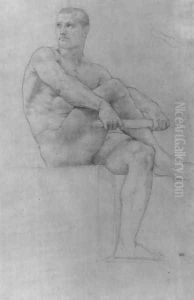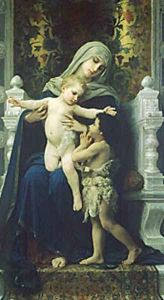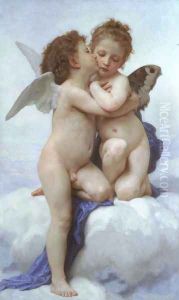William-Adolphe Bouguereau Paintings
William-Adolphe Bouguereau was a French painter, a staunch traditionalist whose realistic genre paintings and mythological themes were modern interpretations of Classical subjects with a heavy emphasis on the female human body. Born in La Rochelle, France, on November 30, 1825, Bouguereau's artistic talent emerged early, but his family's modest means made access to formal training difficult. However, with the assistance of a local priest, he was able to attend the École des Beaux-Arts in Bordeaux, where he won his first prize for his painting 'Saint Roch'.
Bouguereau moved to Paris and entered the École des Beaux-Arts there in 1846. He studied under François-Édouard Picot and was heavily influenced by the academic artistic traditions, particularly the works of the old masters of the Renaissance. In 1850, he won the prestigious Prix de Rome, which allowed him to study at the Villa Medici in Rome for several years. There, he was deeply influenced by ancient and Renaissance art, as well as the work of Raphael, an influence that would be seen throughout his career.
Upon his return to France, Bouguereau quickly established himself as one of the leading figures in French academic painting. He became famous for his mythological and allegorical works, which were characterized by their smooth surfaces, classical composition, and a polished finish that left no visible brushstrokes. His works were widely popular, especially among the wealthy art patrons of the time. Bouguereau was a dominant presence in the annual Paris Salons, where he exhibited his works regularly and won numerous awards.
In addition to his mythological subjects, Bouguereau also painted portraits and genre scenes of rural French life, exhibiting a warm sentimentality that appealed to the tastes of his patrons. Despite his success in these genres, it was his depictions of the female form, often imbued with a sense of idealized purity, that are most celebrated today.
Throughout his career, Bouguereau was a staunch defender of academic art, resisting the changes brought about by the Impressionists and other modern movements. He held several prestigious positions, including the presidency of the French Academy of Fine Arts. His influence extended through his teaching, as he took on many students who would later become significant artists in their own right.
By the time of his death in Paris on August 19, 1905, Bouguereau's popularity had begun to decline as the art world shifted towards modernism. However, his work has seen a revival of appreciation in recent decades, with many now valuing his technical mastery and the beauty of his paintings. Bouguereau's legacy continues to be celebrated, his works are exhibited in major museums around the world, and he remains a significant figure in the history of French art.
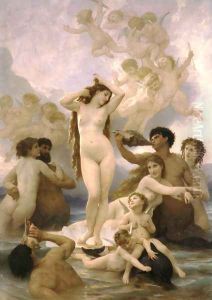
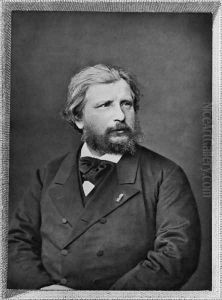
![Fardeau Agreable [Not too Much to Carry]](https://www.niceartgallery.com/imgs/105543/s/williamadolphe-bouguereau-fardeau-agreable-not-too-much-to-carry-12b19775.jpg)
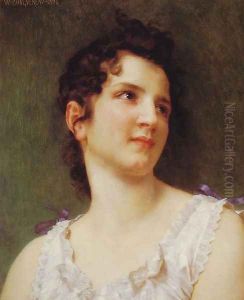
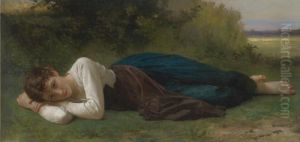



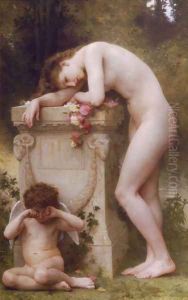
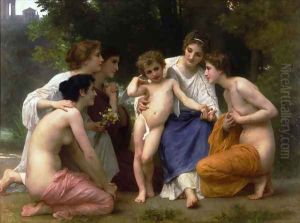

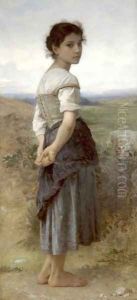
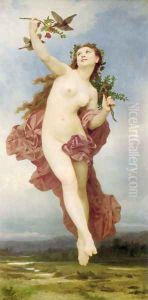
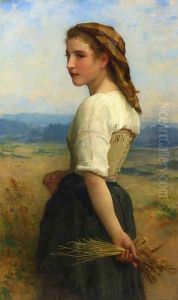
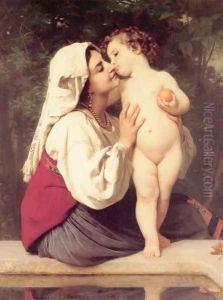
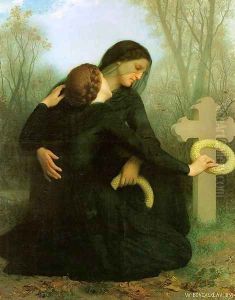

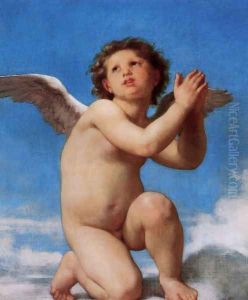
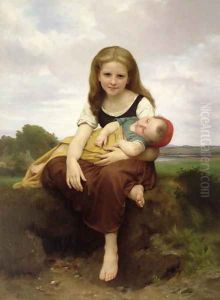
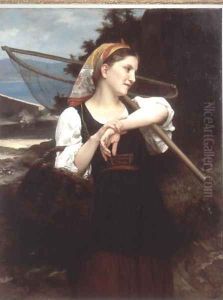

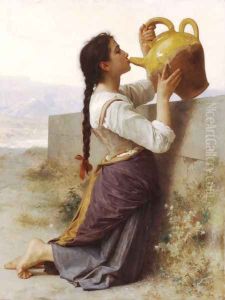
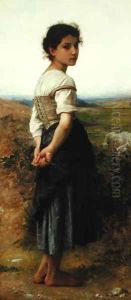

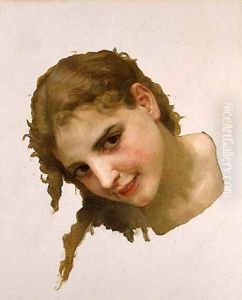
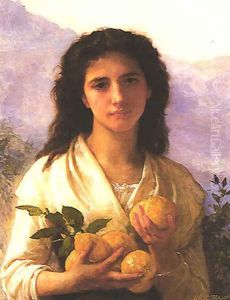
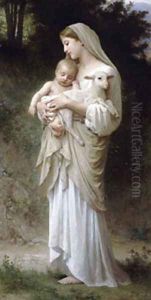
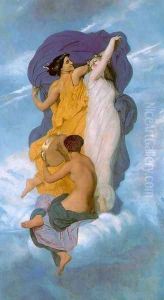
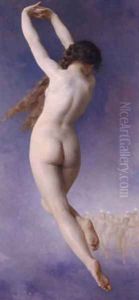
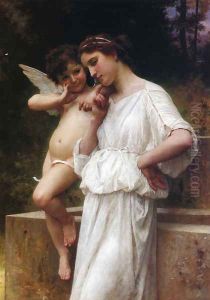
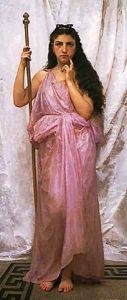

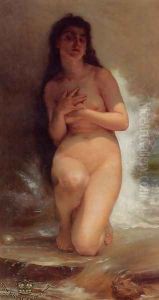
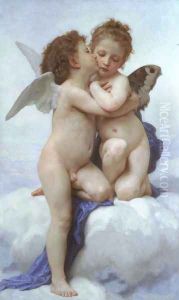
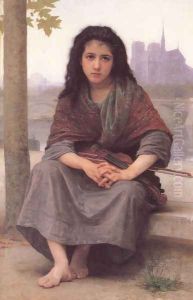
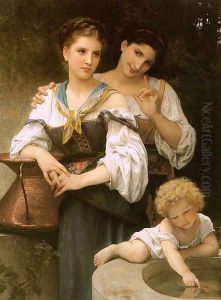
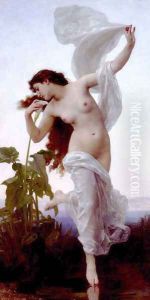
![Baigneuse [Bather]](https://www.niceartgallery.com/imgs/105586/s/williamadolphe-bouguereau-baigneuse-bather-ff0d2724.jpg)
